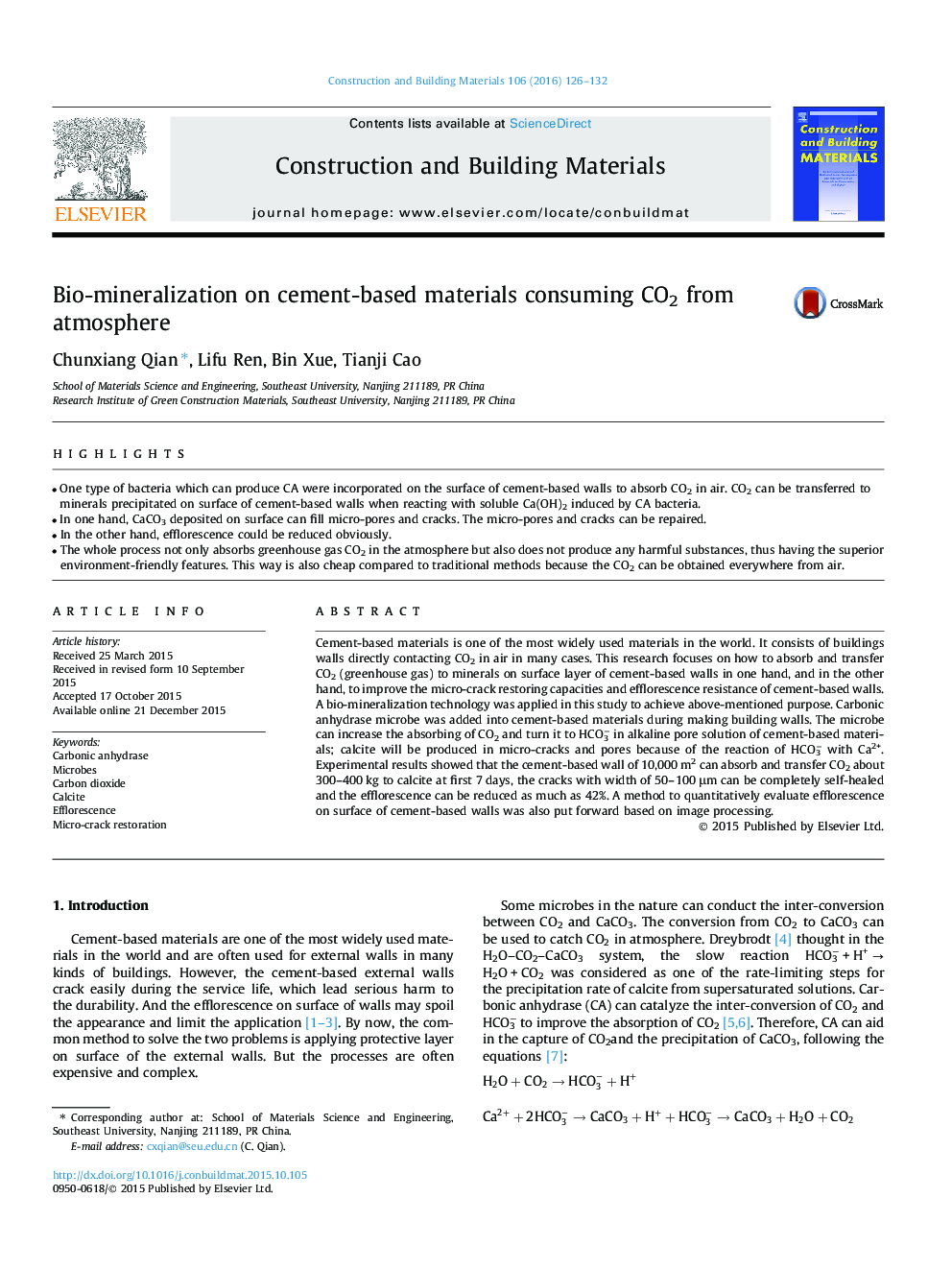| Article ID | Journal | Published Year | Pages | File Type |
|---|---|---|---|---|
| 256474 | Construction and Building Materials | 2016 | 7 Pages |
•One type of bacteria which can produce CA were incorporated on the surface of cement-based walls to absorb CO2 in air. CO2 can be transferred to minerals precipitated on surface of cement-based walls when reacting with soluble Ca(OH)2 induced by CA bacteria.•In one hand, CaCO3 deposited on surface can fill micro-pores and cracks. The micro-pores and cracks can be repaired.•In the other hand, efflorescence could be reduced obviously.•The whole process not only absorbs greenhouse gas CO2 in the atmosphere but also does not produce any harmful substances, thus having the superior environment-friendly features. This way is also cheap compared to traditional methods because the CO2 can be obtained everywhere from air.
Cement-based materials is one of the most widely used materials in the world. It consists of buildings walls directly contacting CO2 in air in many cases. This research focuses on how to absorb and transfer CO2 (greenhouse gas) to minerals on surface layer of cement-based walls in one hand, and in the other hand, to improve the micro-crack restoring capacities and efflorescence resistance of cement-based walls. A bio-mineralization technology was applied in this study to achieve above-mentioned purpose. Carbonic anhydrase microbe was added into cement-based materials during making building walls. The microbe can increase the absorbing of CO2 and turn it to HCO3− in alkaline pore solution of cement-based materials; calcite will be produced in micro-cracks and pores because of the reaction of HCO3− with Ca2+. Experimental results showed that the cement-based wall of 10,000 m2 can absorb and transfer CO2 about 300–400 kg to calcite at first 7 days, the cracks with width of 50–100 μm can be completely self-healed and the efflorescence can be reduced as much as 42%. A method to quantitatively evaluate efflorescence on surface of cement-based walls was also put forward based on image processing.
